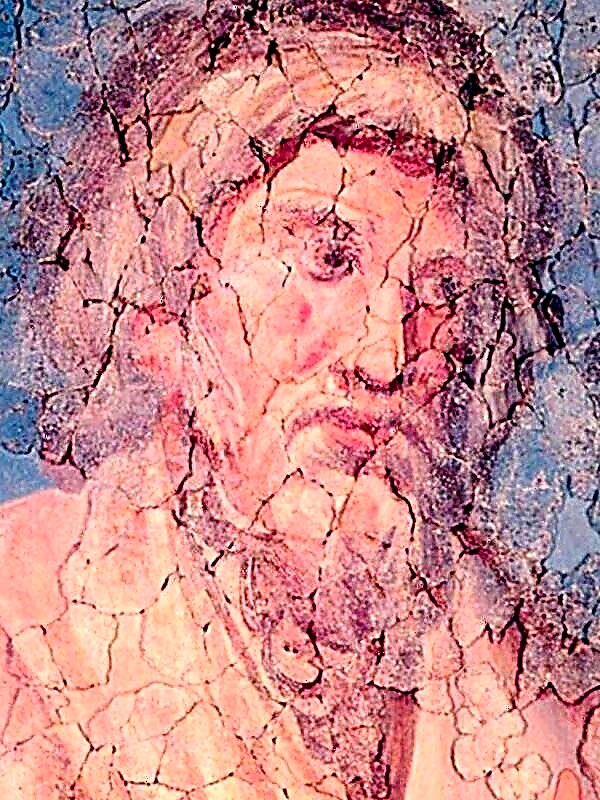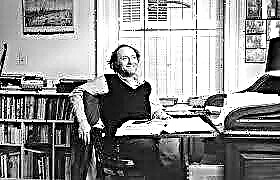: Under mysterious circumstances, an elderly professor dies collecting information about the cruel cult of Cthulhu. His nephew continues the investigation and finds out that the monster actually exists.
Horror in clay
In the winter of 1926, the narrator’s cousin died. Professor George Angel, a major specialist in ancient writing, died suddenly, having encountered a black sailor on the street. According to doctors, the old man could not stand his heart.
Being the only relative of the childless professor, the narrator inherited his archives. Parsing the papers, he found a box with a clay bas-relief, scattered notes and newspaper clippings. The bas-relief of clearly modern origin depicted a strange monster against the backdrop of a cyclopean city.
The fleshy head, equipped with tentacles, was crowned by an absurd scaly body with underdeveloped wings; moreover, it was the general outline of this figure that made it so frighteningly terrible.
Under the image was a series of unfamiliar hieroglyphs.
In the professor’s notes, the narrator found a large manuscript under the heading “Call of Klukhtu” and many smaller ones with descriptions of dreams and excerpts from theosophical works. Notes on clandestine sects and cults cut from newspapers were attached to the manuscripts.
From the main manuscript, the narrator learned about the young sculptor Henry Wilcox. It was he who brought the professor a strange bas-relief, which he fashioned in a dream, and asked to decode the hieroglyphs. One night, Wilcox felt tremors, after which he dreamed of a city built of huge monoliths that exuded green slime and covered with hieroglyphs. In a dream, the sculptor heard the word "Klukhta."
From this day, Wilcox often dreamed of a terrible city. One night, he saw the inhabitants of this city - giant creatures that looked like a monster from a bas-relief, the terrible appearance of which caused the sculptor to have a strong fever. Having recovered, Wilcock forgot his bizarre visions and never met the professor again.
After conducting an investigation, the professor found out that during this period many creative people dreamed of cyclopean cities, and there were also cases of "panic, psychosis, manic phenomena and eccentricities."
The narrator was skeptical of what he read. He considered the sculptor a fraudster, who learned about the events described in the second part of the manuscript, and decided to deceive the old professor.
The Story of Inspector Legrass
Even before meeting with the sculptor, Professor Angel heard the word “Cthulhu” and saw an image of a nameless demon. It was this event, described in the second part of the manuscript, that woke up the professor’s "greedy interest in Wilcox."
Seventeen years ago, at the annual conference of the American Archaeological Society, the professor met Police Inspector Legress of New Orleans. He brought to the conference an ancient figure depicting the same monster as on the bas-relief.
The figurine was confiscated in a swampy forest near New Orleans during a raid on a certain sect. The inspector decided to show the figurine to scientists in order to find out what cult this sect professed.
The figurine made a lasting impression on scientists. No one could decipher the hieroglyphs carved on it, and the stone from which it was carved turned out to be of clearly extraterrestrial origin.
The hand of an unknown sculptor breathed life into this eerie-looking object; and at the same time, centuries and even whole millennia seemed to be inscribed in the dull greenish surface of an unknown stone.
Only one of the scientists saw a similar figurine from a degenerate Eskimo tribe, which worshiped a certain kind of devil. The word "Cthulhu" was also present in their prayers.
Legress said that he captured ministers of worship during an orgy when people were sacrificed. Sectarians, mostly mulattos and mestizos, sang a ritual phrase reminiscent of the songs of the Eskimos. Translated, she meant: "Dead Cthulhu is sleeping in his house in R’leja, waiting in the wings."
According to the sectarians, they worshiped the Great Elders who came to Earth from heaven, centuries before the first people appeared. Now they, not living and not dead, lie in their cities at the bottom of the ocean.
Their dead bodies told their secrets to the first person in his dreams, and he created a cult that would never die.
When the stars take a favorable position, the great Kluchtu will wake up and take over the world. Many sects around the globe are waiting for this moment.
After reading the manuscript, the narrator began an investigation. First, he met with sculptor Wilcox. He spoke of the cities he dreamed of made of slippery stone with irregular, non-Euclidean geometry. The narrator realized that the sculptor is not lying. Perhaps Wilcox had once heard of the cult of Kluhtu, and now it has surfaced in his subconscious.
After a conversation with Legress, the narrator no longer doubted that he had attacked the trail of a secret and very ancient religion, the discovery of which would make him a famous scientist. He also noticed that the events described in the manuscript of Professor Angel coincided in a strange way in time. Soon, the narrator decided that the old scientist was killed, because he was pushed by a Negro sailor, and there were many blacks in the New Orleans sect.
Will the future show me how I am destined to leave, as I already know too much ...
Sea madness
The narrator almost abandoned his study of the Cult of Cthulhu when he caught sight of a Sydney magazine with a photograph of a figurine similar to the one that Legress had found. From an article published under the photograph, the narrator learned about the Vigilant yacht found in the ocean with one living person on board who was clutching a demonic figurine in his hand.
The survivor, sailor Johansen, said that their ship, Emma, met the Vigilant after a severe storm. The ominous crew of the yacht, consisting of half-breeds, demanded that the captain of Emma change course, and when he refused, attacked the ship. The crew did not give up and soon won. Having interrupted the wild team, the crew of the damaged Emma moved to the Vigilant and set off on the same course to find out what these strange people tried to hide.
The yacht approached a small island on which almost the entire crew perished. Johansen said that "they fell into a deep cleft in the rocks." Only he and another sailor, who soon died, managed to leave the island. Idol Johansen found on a yacht - he was worshiped by the Vigilant team.
The narrator noted that the storm that hit Emma coincides with the period when the sculptor Wilcox created his bas-relief. And when the team landed on the island, the sculptor had a fever.
The narrator went to Australia, where he found out that Johansen moved to live in Oslo. Arriving there, he learned that the sailor died of heart failure right on the street, in the arms of two sailors, Indians.
Since then I have been obsessed with constant and obsessive dark fear and I know that he will not leave me until I find my end, “by accident” or somehow.
The widow of Johansen gave the storyteller the manuscript of her late husband, written in English - the woman did not know this language. After reading the manuscript, the narrator forever lost peace.
Having landed on a nameless island, sailors stumbled upon a city built of huge, moist greenish monoliths. The geometry of the city was so alien to the human eye that vertical objects seemed horizontal, and where there should be a ledge, a notch was seen.
In one of the buildings, sailors found a door with an already familiar image of a cephalopod monster. One of them managed to open it. Darkness began to flow out of the doorway, material as black smoke, and after it an incredible stench.Then a vile squelch was heard, and a huge creature began to squeeze through the door.
Clumsily loud and exhaling mucus, It appeared before them and began to squeeze out its green, jelly-like immensity through the black doorway to the touch.
The stars took a favorable position, and Cthulhu awoke.
Two sailors died of horror when they saw an indescribable monster, three creatures were destroyed, another was swallowed by the ancient city wall. Johansson and his friend got to the Yacht. They managed to launch Alert, but the monster was already in the water and chased them.
Johanson realized that they could not get away - the speed of the yacht is too low. Then he unfolded the yacht and rammed the creature. She burst like a giant bubble, but then her pieces began to merge "into their sickening original form." This slight delay was enough - the yacht managed to leave.
On the way, Vigilant again fell into a storm that coincided with the recovery of architect Wilcox. Johansson's partner went crazy and died, and Johanson himself was on the verge of madness for a long time. Returning to his homeland, he described what had happened, but so that his wife could not read it.
The storyteller put the Johanson manuscript in a box where the bas-relief and the professor’s notes were kept. He learned that the city of R’lihe again went under water, but the monster is still alive, he will someday wake up, and chaos will reign on Earth.
A rebel can go into the abyss, and one who sinks into the abyss can rise again.
The narrator believes that he does not have long to live - the worshipers will kill him for describing everything. He hopes that his executives will not let people read this story and will keep a terrible secret.

 Metamorphoses
Metamorphoses








